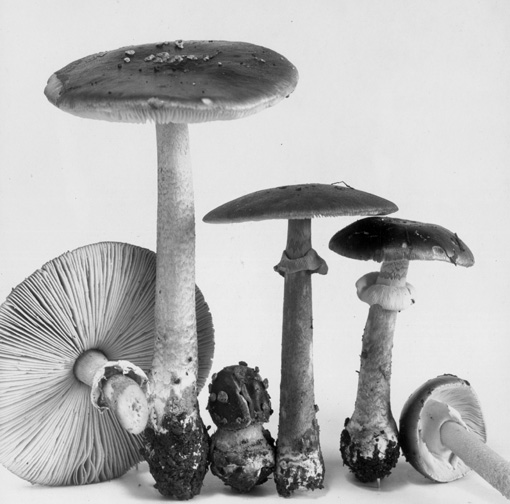When the ordinary becomes extraordinary: A new species in our own backyard
Think of a type specimen as a kind of anchor for a species concept. Are you a lumper or a splitter? Splitters are inclined to recognize lots of narrowly defined species; lumpers put all kinds of different-looking things into just a few species. You and I may have different notions of how narrow or broad a species should be, but both of our concepts must include the type specimen. To decide what names go with what species, taxonomists often have to look at types.
For many years when collectors found this yellow to orange capped Amanita species, they assumed it was a small specimen of Amanita muscaria var. formosa or Amanita frostiana. G.F. Atkinson took a closer look, and found that the fungus in our photo differs from both A. frostiana and A. muscaria. Its cap is not striate (it lacks minute radiating furrows); unlike A. frostiana the volva is not ocreate (it doesn't sheath the base like a stocking); and unlike A. muscaria it has a smooth stem. The spores are different, too. Based on these differences, Atkinson erected a new species, Amanita flavoconia — "the yellow dust Amanita." The yellow patches or warts on the cap are remnants of the universal veil that once encased the whole baby mushroom like an eggshell. It turns out to be much more common than either of its look-alike cousins.
What appears to be an ordinary mushroom in passing may, in fact, be something new and exciting.

